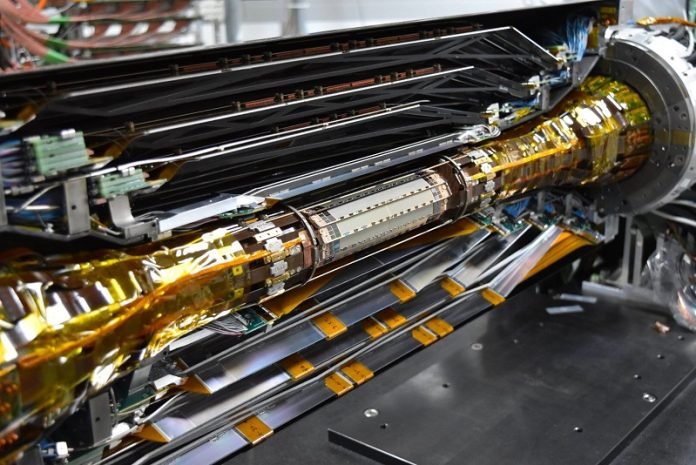
The Belle II project, based in Japan, is leading a global hunt for new phenomena in the field of particle physics.
This international project has recently reached a significant milestone, with a group of scientists successfully installing the world’s thinnest-ever pixel detector.
About the size of a soda can, this detector was designed to identify signals from certain particle decays. These decays could offer insights into why matter and antimatter in the universe are not balanced.
The Belle II project is situated at the SuperKEKB accelerator at Japan’s KEK research center. It brings together over 1,200 researchers from across the world. The aim is to discover new aspects of the universe not explained by the currently accepted Standard Model of particle physics.
The journey of the pixel detector began in Munich, Germany. Its components traveled across Germany to various institutions, including the University of Bonn, and finally to the Deutsches Elektronen-Synchrotron (DESY) in Hamburg, where it was assembled.
The final leg of its trip was a flight to Japan where it was installed in the SuperKEKB electron-positron collider.
Transporting this sensitive equipment was not easy. To protect it from damage due to turbulence or mishandling, it was housed in a specially designed case and even given its own seat in business class!
The installation of the detector in Japan was a successful operation, thanks to the hard work and dedication of a team of researchers from the University of Bonn. They were up against challenges such as limited space but managed to install the detector flawlessly.
The pixel detector plays a vital role in Belle II’s experiments. According to Prof. Dr. Florian Bernlochner, the group leader, it is essential for accurately measuring the lifetimes of heavy quarks, subatomic particles.
This data will allow the researchers to investigate a fundamental symmetry in nature—charge-parity symmetry—more closely.
Understanding why this symmetry is violated is key to answering why the universe is mostly made up of matter and not equal parts of matter and antimatter. Belle II aims to delve deeper into why matter and antimatter behave differently and if unknown particles or forces influence the decay of heavy quarks.
To detect these decaying quarks, the detector had to be incredibly thin and lightweight. It is composed of 20 silicon strips, each as thin as a human hair. With this design, Belle II now boasts the world’s thinnest pixel detector.
This innovative detector will produce up to 50,000 high-resolution images every second of the decaying quarks. The same technology can also be used in other fields such as X-ray satellite missions, the search for dark matter, and medical imaging.
Years of collaboration between several institutions and research centers led to this achievement.
The team from the University of Bonn, which was heavily involved in the development of the pixel detector, expressed their gratitude to everyone involved from Japan, Europe, and Germany. This remarkable achievement is a testament to their hard work and dedication.
Follow us on Twitter for more articles about this topic.



